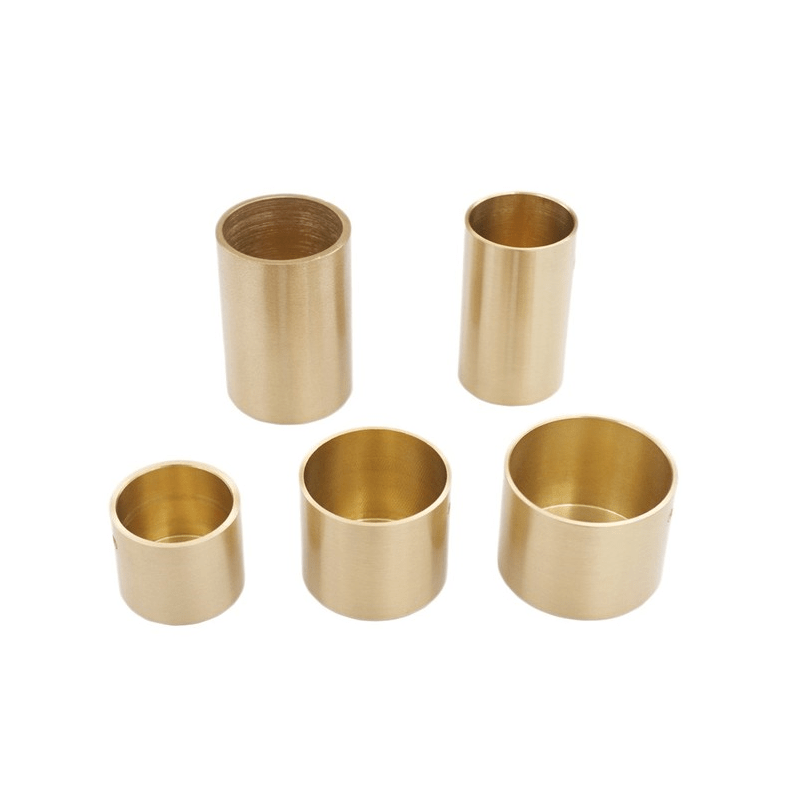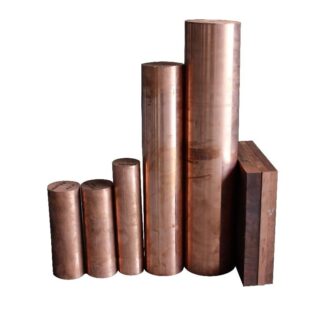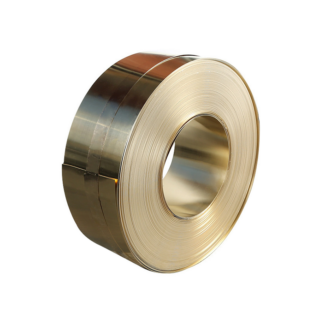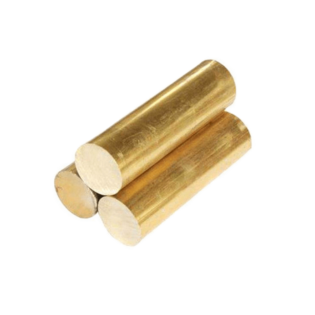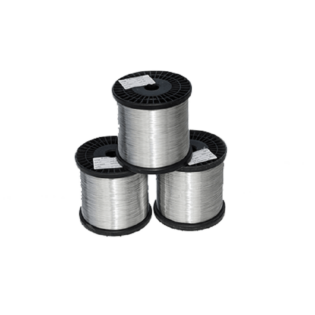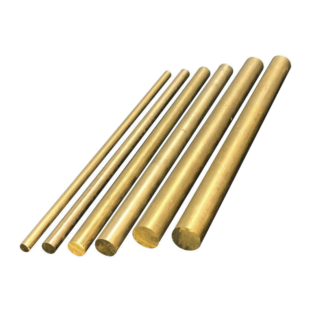C51000 Description
C51000 is a tin-phosphor bronze alloy with many excellent properties and a wide range of applications. In this article, we will focus on the characteristics and uses of C51000 copper alloy.
Introduction: C51000 tin-phosphorus bronze alloy is an important copper alloy material with excellent properties and diverse applications. Its chemical composition includes copper (Cu), phosphorus (P), tin (Sn), zinc (Zn), lead (Pb), iron (Fe) and nickel (Ni). C51000 copper alloy has excellent corrosion resistance, wear resistance and antimagnetic properties and is suitable for a variety of industrial fields. Next, we’ll explore the properties, uses, and answers to three questions about tin phosphor bronze.
Characteristics of C51000 tin phosphor bronze
Corrosion resistance: C51000 copper alloy shows high corrosion resistance in corrosive environments such as sea water and atmosphere, and can maintain good working condition.Wear resistance: This alloy has excellent wear resistance and can be used to manufacture wear-resistant parts and sliding bearings, and can maintain good working performance in high pressure and high friction environments.
Antimagnetic properties: C51000 alloy has good antimagnetic properties and is suitable for applications requiring antimagnetic materials.
Strength and elasticity: C51000 copper alloy has high strength and good elasticity, and can withstand large external loads.
Processing properties: The alloy has good pressure processing properties in both hot and cold states, and can be formed by hot pressing and cutting.
C51000 Tin Phosphor Bronze is an important copper alloy material with excellent properties and a wide range of applications. Its characteristics include corrosion resistance, wear resistance, antimagnetic properties, strength and elasticity, etc., and is suitable for manufacturing springs, wear-resistant parts, antimagnetic parts, etc. The chemical composition content of C51000 tin phosphor bronze is precisely controlled to ensure the performance stability of the alloy. By gaining a deeper understanding of the alloy’s properties and uses, we can better apply its advantages in various fields.
Typical uses
Architecture: bridge bearing plates
Electrical: electrical connectors, electrical flexing contact blades, electromechanical spring components, electronic and precision instrument parts, electronic connectors, fuse clips, resistance wire, switch parts, wire brushes
Fasteners: cotter pins, fasteners, lock washers
Industrial: beater bar, bellows, bourdon tubes, chemical hardware, clutch disks, diaphragms, perforated sheets, pressure responsive elements, sleeve bushings, springs, textile machinery, truss wire, welding rods
Similar or equivalent specification
| CDA | ASTM | SAE | AMS | Federal | Military | Other |
|---|---|---|---|---|---|---|
| C51000 | B139 B139M | J461 J463 | 4625 |
Chemical composition
| Cu% | Pb% | Sn% | Zn% | Fe% | P% | ||||||
|---|---|---|---|---|---|---|---|---|---|---|---|
Chemical composition according to ASTM B139/B139M-12(2017) Note: Cu + sum of named elements, 99.5% min. Single values represent maximums. | |||||||||||
| Rem. | 0.05 | 4.20- 5.80 | 0.30 | 0.10 | 0.03- 0.35 | ||||||
Machinability
| Copper alloy UNS No. | Machinability rating | Density (lb/in3 at 68 °F) |
|---|---|---|
| C51000 | 20 | 0.320 |
Mechanical properties
C51000
H04 hard
Size range: 1/4″ to 1/2″ round and hexagonal inclusive
| Tensile strength, min | Yield strength, at 0.5% extension under load, min | Elongation, 4x Diameter or Specimen Thickness, min | Rockwell “B” hardness | Remarks | ||
|---|---|---|---|---|---|---|
| ksi | MPa | ksi | MPa | % | typical HRB | |
| 70 | 485 | 13 | 87 | |||
Size range: over 1/2″ to 1″ round and hexagonal inclusive
| Tensile strength, min | Yield strength, at 0.5% extension under load, min | Elongation, 4x Diameter or Specimen Thickness, min | Rockwell “B” hardness | Remarks | ||
|---|---|---|---|---|---|---|
| ksi | MPa | ksi | MPa | % | typical HRB | |
| 60 | 415 | 15 | 87 | |||
Size range: over 1″ round and hexagonal
| Tensile strength, min | Yield strength, at 0.5% extension under load, min | Elongation, 4x Diameter or Specimen Thickness, min | Rockwell “B” hardness | Remarks | ||
|---|---|---|---|---|---|---|
| ksi | MPa | ksi | MPa | % | typical HRB | |
| 55 | 380 | 18 | 87 | |||
C51000
H08 spring
Size range: 0.026″ to 1/16″ round inclusive
| Tensile strength, min | Yield strength, at 0.5% extension under load, min | Elongation, 4x Diameter or Specimen Thickness, min | Rockwell “B” hardness | Remarks | ||
|---|---|---|---|---|---|---|
| ksi | MPa | ksi | MPa | % | typical HRB | |
| 115 | 790 | |||||
Size range: over 1/16″ to 1/8″ round inclusive
| Tensile strength, min | Yield strength, at 0.5% extension under load, min | Elongation, 4x Diameter or Specimen Thickness, min | Rockwell “B” hardness | Remarks | ||
|---|---|---|---|---|---|---|
| ksi | MPa | ksi | MPa | % | typical HRB | |
| 110 | 760 | |||||
Size range: over 1/8″ to 1/4″ round inclusive
| Tensile strength, min | Yield strength, at 0.5% extension under load, min | Elongation, 4x Diameter or Specimen Thickness, min | Rockwell “B” hardness | Remarks | ||
|---|---|---|---|---|---|---|
| ksi | MPa | ksi | MPa | % | typical HRB | |
| 105 | 725 | 3.5 | ||||
Size range: over 1/4″ to 3/8″ round inclusive
| Tensile strength, min | Yield strength, at 0.5% extension under load, min | Elongation, 4x Diameter or Specimen Thickness, min | Rockwell “B” hardness | Remarks | ||
|---|---|---|---|---|---|---|
| ksi | MPa | ksi | MPa | % | typical HRB | |
| 100 | 690 | 5 | ||||
Size range: over 3/8″ to 1/2″ round inclusive
| Tensile strength, min | Yield strength, at 0.5% extension under load, min | Elongation, 4x Diameter or Specimen Thickness, min | Rockwell “B” hardness | Remarks | ||
|---|---|---|---|---|---|---|
| ksi | MPa | ksi | MPa | % | typical HRB | |
| 90 | 620 | 9 | 95 | |||
Physical properties
Physical properties provided by CDA *Determined on an alloy containing 5% tin and .2% phosphorus. This value will vary with the composition. | |||||||||||
| US Customary | Metric | ||||||||||
|---|---|---|---|---|---|---|---|---|---|---|---|
| Melting point – liquidus | 1920 °F | 1049 °C | |||||||||
| Melting point – solidus | 1750 °F | 954 °C | |||||||||
| Density | 0.32 lb/in3 at 68 °F | 8.86 gm/cm3 at 20 °C | |||||||||
| Specific gravity | 8.86 | 8.86 | |||||||||
| Electrical conductivity* | 15% IACS at 68 °F | 0.088 MegaSiemens/cm at 20 °C | |||||||||
| Thermal conductivity | 40 Btu/sq ft/ft hr/°F at 68 °F | 69.2 W/m at 20 °C | |||||||||
| Coefficient of thermal expansion 68-572 | 9.9 ·10-6 per °F (68-572 °F) | 17.1 ·10-6 per °C (20-300 °C) | |||||||||
| Specific heat capacity | 0.09 Btu/lb/°F at 68 °F | 377.1 J/kg at 20 °C | |||||||||
| Modulus of elasticity in tension | 16000 ksi | 110310 MPa | |||||||||
| Modulus of rigidity | 6000 ksi | 41370 MPa | |||||||||
Fabrication properties
Fabrication properties provided by CDA | |||||||||||
| Technique | Suitability | ||||||||||
|---|---|---|---|---|---|---|---|---|---|---|---|
| Soldering | Excellent | ||||||||||
| Brazing | Excellent | ||||||||||
| Oxyacetylene welding | Fair | ||||||||||
| Gas shielded arc welding | Good | ||||||||||
| Coated metal arc welding | Fair | ||||||||||
| Spot weld | Good | ||||||||||
| Seam weld | Fair | ||||||||||
| Butt weld | Excellent | ||||||||||
| Capacity for being cold worked | Excellent | ||||||||||
| Capacity for being hot formed | Poor | ||||||||||
| Machinability rating | 20 | ||||||||||
Thermal properties
Thermal properties provided by CDA *Temperature is measured in Fahrenheit. | |||||||||||
| Treatment | Minimum* | Maximum* | |||||||||
|---|---|---|---|---|---|---|---|---|---|---|---|
| Annealing | 900 | 1250 | |||||||||
Common fabrication processes
Blanking, drawing, forming and bending, heading and upsetting, roll threading and knurling, shearing, stamping
Common fabrication processes provided by CDA
